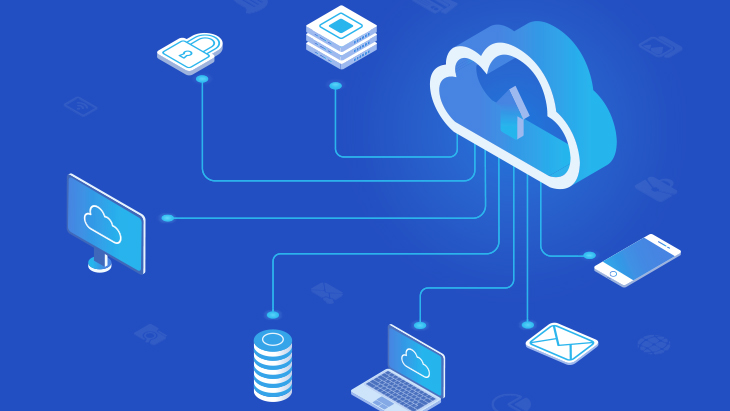
Four Things to Consider About Privileged Access Management
Recently, Privileged Access Management (PAM) became the most effective security management method thanks to its ability to provide companies with comprehensive end-to-end solutions to ensure data security. Neither government agencies nor private sector companies are safe from cyber-attacks, regardless of time and location, and as hackers evolve in terms of their resources and methods, so must the security features needed to stop them.
Although today’s cybersecurity technologies are quite efficient, they are not sufficient when deployed as the sole precaution. Keep in mind that any security precaution, including Privileged Access Management, is up against malicious software created by people, not machines, therefore cyberattack scenarios may not always play out by the book. For that reason, as organizations deploy their security infrastructure, it becomes imperative to move forward with an approach that focuses on the human factor, as much as the technology. This requires foresight into both internal and external threats, meaning that infrastructures that offer data security such as Privileged Access Management (PAM), which provides multi-layer, user-based, and instant system monitoring, have become non-negligible. In general, Privileged Access Management applications consist of four main elements and manage to balance both technology and human factors. You can enhance your business' data security policies to the next level by employing Privileged Access Management and following the steps below.
1. Monitor and Secure All Privileged Accounts
The identification and control of privileged accounts are among the most fundamental and crucial elements of Privileged Access Management. Regardless of being malicious or not, an uncontrolled privileged account will pose a risk. For instance, if an employee bestowed with privileged access rights without supervision has a momentary slip-up, this may cause significant security gaps and compromise your company's critical data.
For efficient process management regarding privileged access always act with knowledge in hand, always be aware of the users and their respective access rights. People who conduct improper operations must be kept under record and reviewed, and if required, their access rights should be restricted. To implement these steps in a healthy, seamless, and efficient manner, you can use a Privileged Access Management platform with a modular structure and multiple security layers.
2. Manage and Control Access
The two most basic steps in Privileged Access Management identify and determine the accounts with privileged access and the diligent specification of the areas that these accounts can access. Therefore, regularly managing and controlling the activities of people with privileged accounts and the changes these accounts go through is of the utmost importance. As we mentioned in our article addressing the Principle of Least Privilege, individual privileged accounts can be monitored using Privileged Access Management to achieve maximum efficiency without disrupting business processes, while keeping the privileges of the users that access critical data at a minimum level.
Kron’s Privileged Access Management solution, Single Connect, provides effective control of privileged access. Single Connect includes modules like privileged session manager, two-factor authentication (2FA), and dynamic password manager, that allow you to control authorized accounts and audit the processes executed using these accounts. Furthermore, Single Connect offers time, location, or device-based verification features, and thus ensures authorized accounts can only access the system within specified hours, from specified locations, or specified devices. All these advanced and detailed applications provide a huge advantage in terms of data security.
3. Record and Audit Privileged Account Activities
Audits and controls conducted by people are as important as technology-supported controls in terms of Privileged Access Management. For this purpose, the access, authorization, and/or data security system should have efficient features in terms of recording and reporting all activities of privileged accounts on the system, in addition to taking high-level security precautions. Therefore, these accounts with various levels of privileges, any changes to these accounts, or the actions conducted by these accounts should be be reviewed via video recordings and should be effectively audited.
4. Ensure More Functional Privileged Tasks
Adopt a holistic and functional approach that includes all real and virtual users inside or outside the system, to provide a seamless, technology and human-focused cybersecurity infrastructure. For this purpose, in addition to employees, supply chain providers (i.e., third parties), and database services (i.e., virtual users), should be taken into consideration to avoid various vulnerabilities and failures in terms of cybersecurity. Therefore, the process of identification of these users should be carefully reviewed during the integration of a Privileged Access Management solution, and room for human error should be minimized or removed. At this stage, one of the fundamental steps of risk management is the application of the Principle of Segregation of Duties. Privileged Access Management applications that can automatize and implement the requirements of the principle of Segregation of Duties, will make privileged account management more efficient and functional.
Kron’s PAM solution Single Connect which is also a niche player in Gartner Magic Quadrant for Privileged Access Management (PAM) report, increases operational efficiency by automatizing routine tasks. It also compiles all applications that your company may require to ensure access and data security such as privileged task automation, central password management, two-factor authorization, and dynamic data masking.
Highlights
Other Blogs

Why SSH Security Matters — And How Kron PAM’s Privileged Session Manager Protects Your Enterprise

Solving the Privileged Access Management Challenge in Dynamic Cloud Environments
















